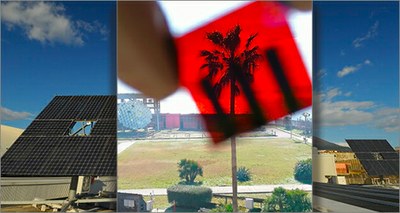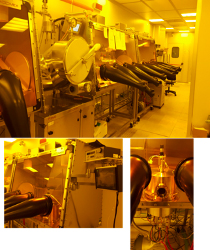Energy: ENEA team achieves efficiency record for perovskite solar cells
1/4/2021
The outcome obtained at the Portici Research Center by an all-female team
 For the first time Italy hit a 20.8% efficiency record [1] for solar cells made of perovskite, a material that has revolutionized the field of photovoltaics in recent years due to its excellent opto-electronic properties and immense potential for the development of high- efficiency and low-cost PV technologies.
For the first time Italy hit a 20.8% efficiency record [1] for solar cells made of perovskite, a material that has revolutionized the field of photovoltaics in recent years due to its excellent opto-electronic properties and immense potential for the development of high- efficiency and low-cost PV technologies.
The result was obtained at the Laboratory of Innovative Devices in the ENEA Portici Research Center, which performs innovative research and development activities in Photovoltaics. “The high level of research attained enables us to stand at the same level as international research groups" explained Paola Delli Veneri, Head of the Innovative Devices Laboratory, where an all-female task force, comprising Vera La Ferrara, Antonella De Maria and Gabriella Rametta, succeeded in developing a process which achieved the efficiency record.
 "Our research team has a long standing experience in silicon-based solar cells production and we have been conducting experiments with organic-inorganic hybrid perovskite cells that we also use to make monolithic perovskite / silicon tandem cells, obtained 'growing' the perovskite cell onto the silicon one - Paola Delli Veneri pointed out- . This type of tandem device can make it possible to exceed the maximum efficiency limit for a single-junction silicon solar cell, thanks to a more efficient use of the solar spectrum ”.
"Our research team has a long standing experience in silicon-based solar cells production and we have been conducting experiments with organic-inorganic hybrid perovskite cells that we also use to make monolithic perovskite / silicon tandem cells, obtained 'growing' the perovskite cell onto the silicon one - Paola Delli Veneri pointed out- . This type of tandem device can make it possible to exceed the maximum efficiency limit for a single-junction silicon solar cell, thanks to a more efficient use of the solar spectrum ”.
The result, obtained as part of the High Efficiency Photovoltaic Project - funded by the Program Agreement on Research of the Electricity System between ENEA and the Ministry of Economic Development- is a significant step forward towards reaching the goal of developing monolithic perovskite / silicon tandem cells entirely made at the ENEA laboratories.
[1] The efficiency or yield of a photovoltaic cell is defined as the ratio between the electrical power available at the terminals and the power of sunlight hitting its surface.
